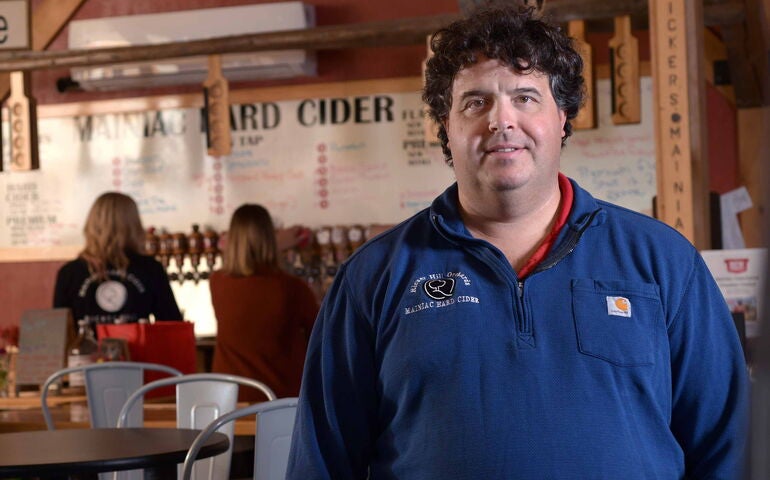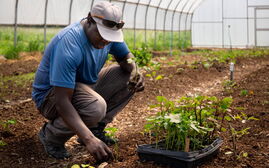Maine farmland volume slides but specialty crops and agritourism are strong
 File PHOTO / FRED FIELD
Like many farm operations, the 10-generation Ricker Hill Orchards in Turner diversified with offerings such hard cider production, led by Andy Ricker.
File PHOTO / FRED FIELD
Like many farm operations, the 10-generation Ricker Hill Orchards in Turner diversified with offerings such hard cider production, led by Andy Ricker.
The latest census of Maine agriculture shows the state is now home to the smallest numbers of farms and farmland acreage since 1997.
In 2022, there were an estimated 7,036 farms with 1.23 million acres of farmland, down from a peak of 8,173 operations and 1.45 million acres in 2012.
Maine lost 564 farms and 82,567 acres of farmland since the last U.S. Department of Agriculture census in 2017.
But the data show that farms continue to be a driver of economic activity, especially in rural communities. Much of the growth comes from specialty crops and agritourism.
Specialty crops, including maple syrup, Christmas trees, hay and nursery and greenhouse products, accounted for the bulk of agricultural activity, amounting to 63.1% of the $548.5 million in agriculture product sales during 2022.
Livestock, poultry and their products comprise the second-largest single USDA commodity group, accounting for 34.3% of sales value in 2022.
The specialty crop market is supported by the University of Maine’s cooperative extension program.
“Faculty and staff within extension are offering new programs every day that support these key sectors including our vegetable and fruit growers, Christmas tree farmers, maple sugaring, livestock and forage producers, and the nursery industry,” said Tori Jackson, extension program leader for agriculture and natural resources.
Farmers are also leveraging opportunities in agritourism, direct sales and on-farm value. Between 2017 and 2022, the income for farms from agritourism and on-farm recreational activities doubled, accounting for $12.2 million. And that increase occurred despite despite the number of farms offering the activities remained nearly the same at 241.
Nearly 20% of the total value of Maine agricultural products sold in 2022, or $172.6 million, was sold directly by Maine farms to consumers, institutions, local and regional retailers, restaurants and food hubs.
“The business landscape for Maine agriculture is changing rapidly,” said Jason Entsminger, state extension specialist for small business and assistant professor of entrepreneurship and innovation.
“The way farms create and capture value through new market channels, how they staff their operations and how they make strategic decisions about supply chains, risk management and financing are some of the major challenges we’re working to help operators address every day.”
Labor was the largest farm expenditure during 2022, with a total expense of $150.6 million. Expenditures on farm labor began to replace purchased feed for livestock as the greatest expense for Maine farms around the 2012 census. The gap between the two categories continues to widen, with the ratio of labor expenditures to feed expenditures on Maine farms more than doubling since 2007.
The census is conducted every five years.













0 Comments